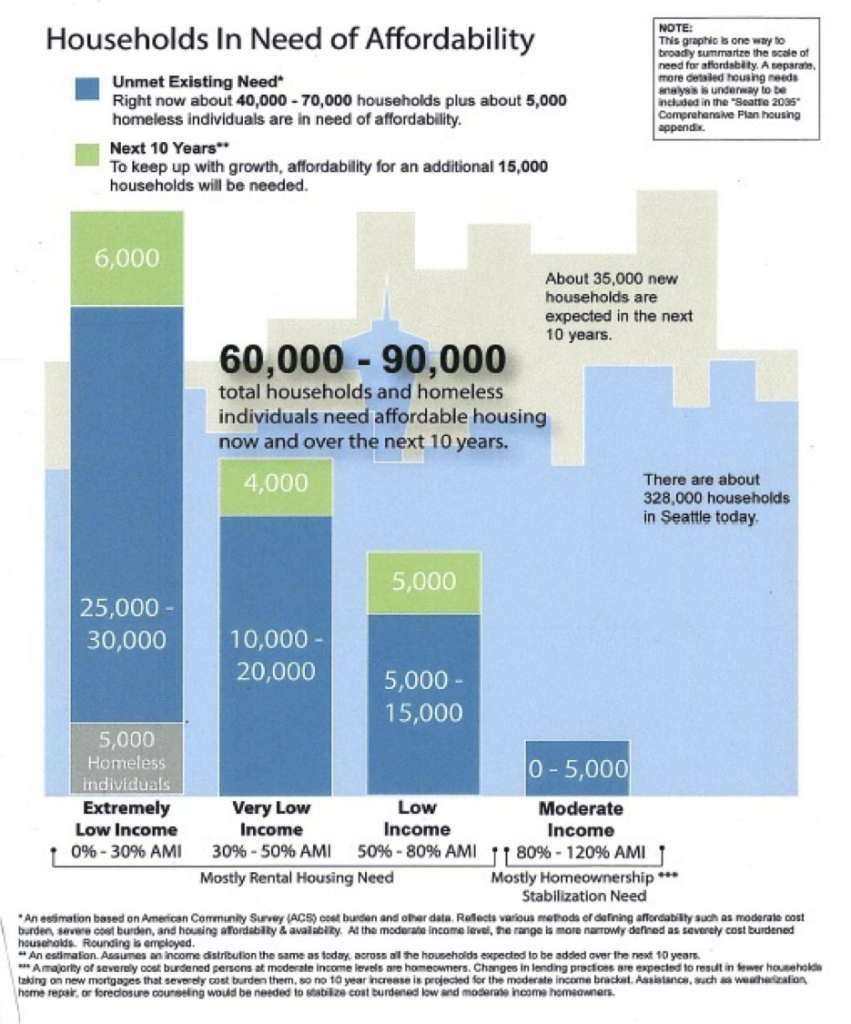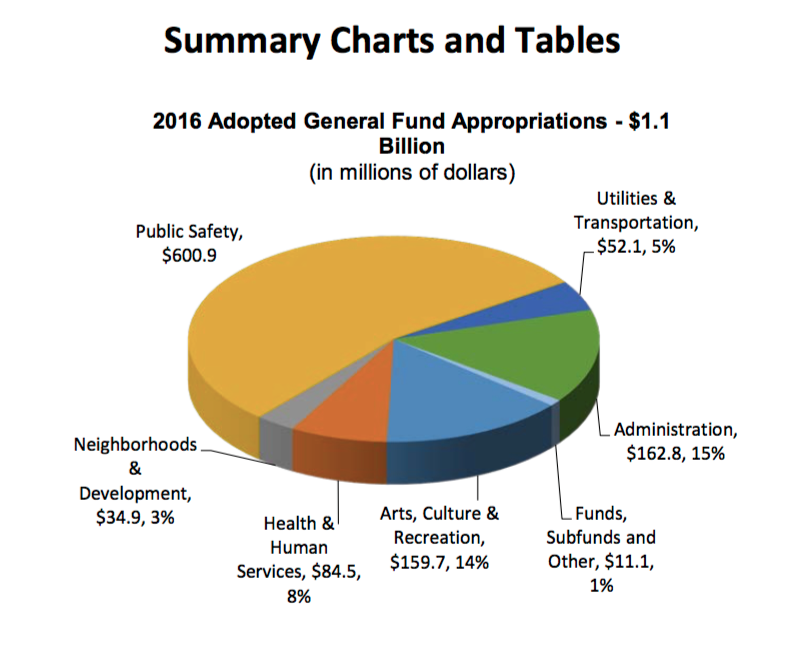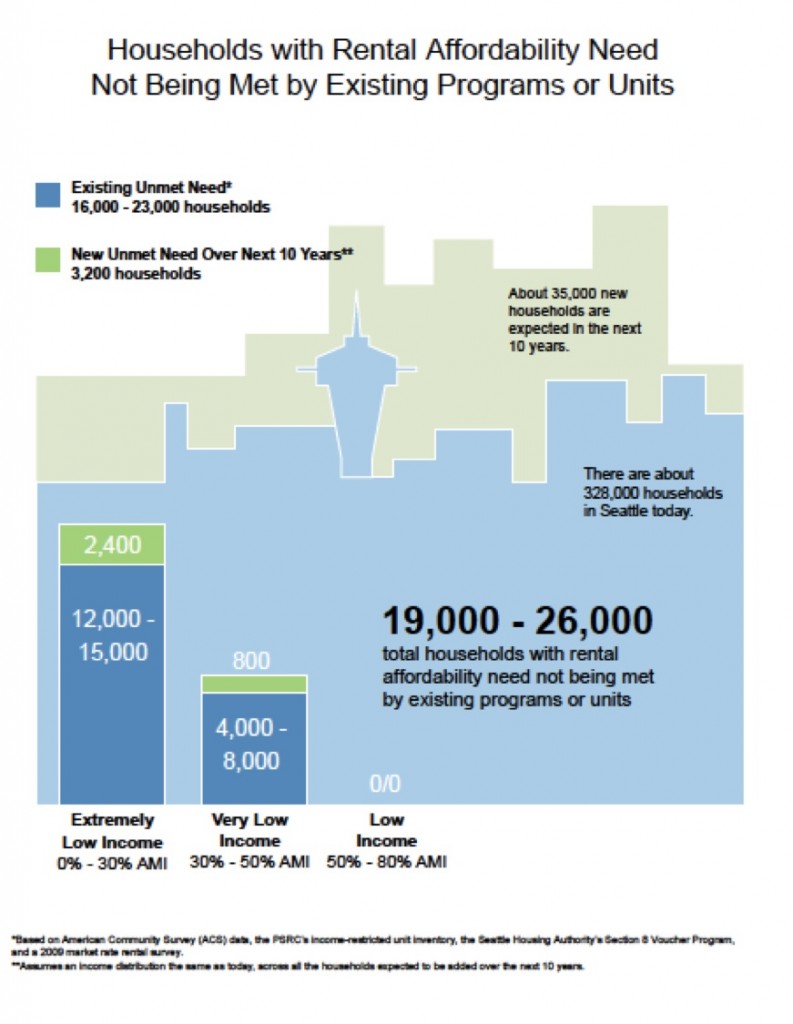Mark Huber: “Building the relationships is just as important as building the homes”
Local builder Mark Huber has been featured in a blog post at the National Association of Home Builders (NAHB) that highlights his work with communities here and internationally building housing. We’ve featured Huber before in our City Builder series that featured stories about the actual humans that build housing for other humans in Seattle. I have two points to make. First, we’ve heard a lot in the last few days about not attributing the motives and actions of individuals to the groups of which they are part. I agree. And second, Huber has a lot to teach us about how we deal with the challenge and work of how we meet housing demand.
First, one of the most serious problems housing faces in our region is that many, many people harbor resentment for developers and builders. One Councilmember, Tim Burgess even told me that when I get up to speak to the City Council he discounts what I say because I represent people who make money from housing. Yes, Councilmember Burgess, it’s called earning a living. But somehow, unlike many other professions or callings, people who build things are supposed to be greedy. Greed is a character trait, not a business model. And people who build housing are engaged in doing what they love to do and what they produce is a benefit to people who need housing.
Locally, Huber is working with many others to rebuild a family’s home that burned down. The family had no insurance and was faced with a problem that many families experience: where will we sleep tonight. Huber’s work on this project is an example of how a team of people are using their building skills to help real people in need, right now. And I think the vast majority of builders and developers in our city get that there are serious housing problems that need a solution, but our political system would rather tax them for their “fair share” than marshall their knowledge and skills.
Not all builders are as socially driven and conscious as Huber, but his work here and in other countries shows a commitment to the person who needs housing and meeting their needs. From the NAHB post:
“This isn’t about us simply building something and then turning it over to whomever is going to use it or live in it,” Huber said. “A lot of what we focus on is learning how and why these people live they way they do. When you come to that understanding, then it’s easier to identify the best way to work together and address their needs.”
And that brings me to my second point. I’ve written about The Jungle, the spontaneous housing solution put together by a couple hundred people under I-5. Is that the best solution? Probably not. But it’s working for the people who are there at the moment. What the City has done is to give the residents of that neighborhood two choices: leave or move into a conventional subsidized unit or shelter.
The problem is that if there was a subsidized unit available, why would anyone sleep in a tent under a bridge. And shelter options don’t work for many families. The City doesn’t seem to be able to cope with any housing solution that works but doesn’t fit their conventional model of what housing is supposed to look like. I’ve pointed out that this was exactly the case with microhousing, because of its size and unique place in the code it was hounded out of existence. It was different so it had to go, even though it was working well for many people.
I wish the City would engage with builders and developers and ask them, “How should we address the challenge of finding housing for everyone that wants it in Seattle?” If it did, the City would tap a valuable resource. Instead, we vilify developers, deny them a place at the table, and set up schemes like Mandatory Inclusionary Zoning to squeeze cash out of their projects to subsidize enormously expensive subsidized units. Mark Huber is a great example of a builder who could help the City not with fees and an inclusionary unit here and there, but developing an efficient and compassionate and useful system wide solution. If only they’d just ask.
Freedom and The Knowledge of People “On the Spot.”
This weekend, the Fourth of July, we celebrate the promulgation of a document in 1776, the Declaration of Indipendence, that seemed to explain not just the grievances of some angry farmers clinging to the eastern edge of an unexplored but already inhabited continent, but a clarion statement of human freedom. But a far more useful document for today’s discussion of housing is Friedrich Hayek’s essay, The Uses of Knowledge in Society, published in 1945. The essay is a brilliant, succinct, yet subtle articulation of how the use of knowledge either leads to freedom for people or takes that freedom away. Hayek’s argument is that a society is more efficient and free when the experience and knowledge of the individual takes precedent over that of planners and bureaucrats.
I’m going to use one paragraph of the essay that I think best catches up the importance of local knowledge.
This is, perhaps, also the point where I should briefly mention the fact that the sort of knowledge with which I have been concerned is knowledge of the kind which by its nature cannot enter into statistics and therefore cannot be conveyed to any central authority in statistical form. The statistics which such a central authority would have to use would have to be arrived at precisely by abstracting from minor differences between the things, by lumping together, as resources of one kind, items which differ as regards location, quality, and other particulars, in a way which may be very significant for the specific decision. It follows from this that central planning based on statistical information by its nature cannot take direct account of these circumstances of time and place and that the central planner will have to find some way or other in which the decisions depending on them can be left to the “man on the spot.”
Let’s get directly to an example, the way we measure and address “housing affordability.” The United States Department of Housing and Urban Development (HUD) dictates that, “Families who pay more than 30 percent of their income for housing are considered cost burdened.” This determination, completely arbitrary, is the operating system for housing policy from the Federal level down to the smallest town.
Local jurisdictions are allowed to adjust this by accounting for income levels usually determined by Area Median Income (AMI). So the City of Seattle can start “abstracting from minor differences between the things, by lumping together” aging United States Census data tracking household spending on housing and income levels. The Federal government stirs in a few other arbitrary ingredients into this stew of normative statistics: no household falling below 60 percent of AMI can receive subsidies from the Federal government. Keep in mind that these normative standards don’t relate to any empirical studies nor have they been extensively studied; that is, they are arbitrary statistical lines drawn against measures of human experience and behavior, gross monthly income and monthly housing expense.
A corollary of the affordability measure is that a household that pays less than 30 percent of its monthly income on housing is doing something called “down renting.” By extending the logic of the normative standard, a household that is spending say 25 percent of its gross monthly income on housing is essentially squatting in someone else’s unit. Practically speaking, a perfect housing economy in any set of census tracts would be one in which households sorted themselves neatly into units by a ratio of monthly unit price to gross monthly income.
Now if a student presented this “solution” to a professor in a public policy graduate program it’s quite likely that he’d get a very low grade. If this same gauge was applied to anything else, say food, it would result in similarly useless results. It’s as if the student closed his eyes, squished them together, groaned, and pronounced, “People should spend exactly 30 percent of their gross monthly income on housing.” Opening his eyes he adds, “And public policy will largely concern itself with households that have incomes that earn…..” closing his eyes and putting his index fingers on the temples of his head, “60 percent of Area Median Income.”
Now many people will wave their hands and say, “C’mon, we’ve gotta have some measure; it might as well be this one.” The problem with this, though, is that when it gets rigidly applied to real situations and then mandates emerge from that application. Here’s what that looks like.
So the “lumping together, as resources of one kind, items which differ as regards location, quality, and other particulars” ends up being “very significant for the specific decision.” Based on this lumping together, City bureaucrats determined that need “affordable housing,” that is housing priced at 30 percent of gross monthly income for a household earning 60 percent or less of AMI. That statistical comparison lead to a diagnosis: we need to build 6,000 to 9,000 housing units priced that way over the next ten years.
Someone forgot to remind themselves that, for example, for the period between 2005 and 2012, housing production in Seattle totaled 29,330 units or, 4,190 units per year. That didn’t stop Councilmembers Sally Bagshaw and Tom Rasmussen from writing a letter stating,
To reach 60,000 – 85,000 units, we must increase our supply by over 6,000-8,500 units of affordable housing annually for the next ten years if we are to make room for the people who want to live and work in our community. If we want to extend that period to twenty years, we need 3,000-4000+ units annually to reach our goal. This will require new approaches.
Yeah. New approaches for sure. Like one that would generate as many as 9,000 units per year. One non-profit developer very conservatively estimated the cost, per unit, of subsidized housing at $200,000 per unit, which using my calculator is $1,800,000,000 in construction and development per year for 10 years. That’s a total outlay in capitol expenditures of $18 billion dollars. To give you a sense of that scale, the entire 2016 General Fund budget is $1.1 billion.
So Councilmembers Sally Bagshaw and Tom Rasmussen would have pitched the City into a frenzy of subsidized housing production that not only exceeded the rate of market rate housing production during one of the hottest periods in the market, but would have consumed the entire general fund of the City. It’s hard to find the words to characterize this story so far, so I’ll leave it to the reader to insert your own adjectives here. But it gets better.
As it turns out, the City bureaucrats failed to account for subsidies including vouchers when they came up with chart. Thanks to the work of erstwhile skeptic Dan Bertolet, we developed this refutation of the need numbers the bureaucrats came up with.
Once all the existing subsidy programs are accounted for and microhousing is considered, the numbers aren’t quite as out of scale as the first seemed. And, not surprisingly, people who spend lots of their gross monthly income on housing have very few dollars to spend. As I’ve pointed out, a household with a baby earning $19,000 per year could spend as much as 7 percent of their gross monthly income on diapers. Is that too much, just right, or too little. The bureaucrats have yet to establish a normative standard for what families should spend on diapers.
But, then, as if to reprise a scene from the Wizard of Oz or Austin Powers (“Why make trillions when we can make….billions?”) Mayor Ed Murray burst forth with his big announcement: the City would produce 20,000 units of affordable housing over 10 years. Why 20,000? Hmmm. I have no idea. Nobody does, including the City. When we wrote a letter asking this along with other questions about the so called, “Grand Bargain” we were me with stiff silence. And those 20,000 units were originally touted as inclusionary units; the City has lowered that number significantly to 6,000 inclusionary units and the rest would be built with fees.
Let me add one more example. Chris Persons director of Capitol Hill Housing, a large non-profit developer, recently wrote a newsletter article. He wrote,
Let’s take a look at the math. The cost of building a single unit of apartment housing in Seattle depends on a lot of factors, but $200,000 is a reasonable estimate. At that price, housing the estimated 10,000 homeless people in Seattle would cost $2 billion, well beyond what Bill [Hobson] predicted in 2014. The sad truth is that homelessness has only grown since 2014 and the cost of building has skyrocketed. That’s the price of our inaction.
I cite this because you can see how those motivated by the money offered by the fees collected by MIZ for building “affordable” housing use “lumping together” to feather their own nests. Billions of dollars to pay Persons’ and his colleagues to go onto the same market as for profit developers to buy land, pay prevailing wages, and pay massive transaction and legal costs to produce housing units in the thousands based on arbitrary numbers? Doesn’t sound like a good investment at all.
Finally, our family “on the spot.”
Put yourself in the place of this household that parked askance, illegally, on Capitol Hill. Do you find yourself thinking, “Well, you shouldn’t have parked there?” or maybe “Why didn’t you just pay those tickets?” or “Why don’t you just go to a shelter or seek some help?” I have no idea what led to this couple being in this exact spot. But I do know that problems faced by people like them won’t be solved by billions of dollars in housing subsidies. And impounding their home won’t magically lead to payment of their fines. I know very little about what’s going on here except that if that car is towed and impounded the people who live in it will be on our streets.
Hayek said, “central planning based on statistical information by its nature cannot take direct account of these circumstances of time and place and that the central planner will have to find some way or other in which the decisions depending on them can be left to the ‘man on the spot.’”
Are households like this going to be helped by the Mayor’s schemes to take money from private developers to give to big non-profit developers? Will this household ‘get the message’ and pay their tickets? Is this household free? Do they have autonomy? Or are they dependent on circumstances beyond their control? Is it their own fault? And even if it is, are we prepared to let them suffer the consequences?
Each and every day individuals in our city wake up wherever they are and try to exercise what will they have. Some of us have many, many resources. Others of us don’t. But how free we are to make decisions, move freely, live where we want to live and who we want to live with, and what our home looks like shouldn’t be the function of statistics, and even less abused and misused statistics. I doubt that anyone would say that the household that was living in this car when I took this picture is “free.” When statistics lump everyone into anonymous blobs, real people don’t get the help they need because the policies designed by government don’t see them because they don’t fit the neat statistical categories.
We need to support families and people of all kinds no matter where they are choosing to live. We need to use data responsibly and realize that not everyone fits neatly into a statistical box — in fact, many households are imprisoned in those statistical boxes. We must stop making policies that lend themselves to cutting ribbons and acting as a balm to weak-minded politicians that won’t ask tough questions but appeal to the easy way out demanded by their constituents. It’s time for some good old fashioned compassion and intuition rather than blind reliance on data coming at us from a dashboard that has only the equivalent of a “Check Engine” light. That means people end up with fewer choices and options and thus, less free.
If we believe in freedom and opportunity, then we ought to consider the words of Thomas Jefferson, too, along with Hayek,
We hold these truths to be self-evident, that all men are created equal, that they are endowed by their Creator with certain unalienable Rights, that among these are Life, Liberty and the pursuit of Happiness.–That to secure these rights, Governments are instituted among Men, deriving their just powers from the consent of the governed, –That whenever any Form of Government becomes destructive of these ends, it is the Right of the People to alter or to abolish it, and to institute new Government, laying its foundation on such principles and organizing its powers in such form, as to them shall seem most likely to effect their Safety and Happiness.
Let’s Make a Deal? What if the City Wanted to Negotiate on MIZ?
What if the City decides to listen to us and invites us to talk about the Mayor’s proposed Mandatory Inclusionary Zoning (MIZ) proposal? What principles should we take if we’re asked to negotiate or compromise on the proposal? How do we ensure that whatever emerges from the political process doesn’t do long lasting damage to the production of housing and the wider housing economy? And how can a compromise avoid something that would just push up housing prices and lead to more aggressive intervention in housing production that would lead to a spiral effect of more legislation, higher prices, and more legislation? So far the phone isn’t ringing, but here are some of my (and they’re only mine!) basic starting points for our side.
To begin with, as I pointed out in a previous post, we need a solid intellectual footing in any negotiation. It’s easy to get lost in the minutiae when dealing with the City; it can be fatally distracting. It’s also easy to look at this cycle or the next six months and forget that a policy change is very hard to undo once it is in the code. I wrote:
Our intellectual operating system should be programmed to always start up with these points:
- If it is argued that housing prices are too high we need to ask, “by what measure?”
- If prices are high by an acceptable metric, then we know that scarcity is the reason and therefore we need more housing.
- That new housing will sell or rent for more than older existing housing.
- That’s ok, because that means newer housing can absorb demand from people with more money to spend and they won’t compete with existing tenants of older housing or new arrivals to the city with less money.
- That new housing, built at private risk and expense, is a public benefit to the whole community.
- Anything, even things that are vital and necessary like health and safety requirements, that add costs and limit capacity always increases the price.
- So any regulations or added costs should more than offset the loss of housing and that lost capacity should be replaced.
- Any value capture scheme to take advantage of increasing or improving housing shouldn’t add time or costs to the production of new housing
- Numerical targets for housing are by their nature arbitrary and should be revisited in favor of careful tracking of how the market is responding to demand
- At whatever point the market fails to meet demand, interventions to support people too poor to pay rents to support the cost of land, construction, financing, and operations should be broad based and expect contributions from those most inefficiently using limited land in the city (i.e. Single-family homeowners)
Now when it comes to the details it’s important to remember, remember, the MIZ proposal would require that all new housing include a set aside or rent restricted housing or pay a fee if inclusion is not possible. In exchange for this performance requirement, the City would adjust the code and give developers more square footage by adjusting Floor Area Ratio (FAR) requirements up. The idea is supposed to be that this is a fair trade of value; more FAR means more revenue from space that can be sold or rented, and this would, supposedly, offset the financial impact of additional construction expense and lost rents. Fundamentally, we know this won’t work in every case. We should reject this idea out of hand.
Instead we ought to ask the City, “What are your goals with this program?”
I learned a long time ago not to negotiate for the other side, so I’ll just start with their stated goal of 1500 units of rent restricted housing and some fees paid to the City to send to non-profit developers.
These are my suggested talking points. We can:
- Commit to working with the City to produce 150 units of rent restricted housing each year over 10 years beginning in 2018;
- Agree to some temporary and limited assessment of fees for the express purpose of creating housing subsidies;
- Agree to contract rezones that would be negotiated over the 10-year period between the City and developers to produce housing set asides in exchange for additional FAR;
- Support rezones that are true exchanges of value and negotiated based on the conditions of a particular project;
- An outside assessment and audit of whether the goal is being met and the fees and value exchange are consistent with any agreement.
- Support possible changes to the Multifamily Tax Exemption (MFTE) program that would help accomplish the City’s unit count objective.
We can’t agree to:
- A permanent, one size fits all change to the land use code that is tied to increases in FAR, performance, and fees;
- A new entitlement program that generates a permanent exaction of fees in exchange for mandated increases in FAR;
- Zone-wide upzones that come with the condition of a permanent, one size fits all, fee schedule and performance requirements;
Other key issues:
- Consider removing for-sale housing product from the assessment of in lieu fees since there isn’t any scenario likely that would allow performance;
- Make no final agreement that excludes one typology, zone, product, or form (i.e. Small Efficiency Dwelling Units etc) at the expense of another.
I find the City’s housing goals set by the Mayor, 50,000 units over decades, to be completely arbitrary. And the inclusionary goals are completely unrelated to any data that I have seen that establish housing need by any definition, even the terrible housing cost income ratio that sets the normative standard of housing expenses at 30 percent of gross monthly income.
Notwithstanding the great leap in logic that we “need” 1500 inclusionary units, it’s fine to work with that goal; it’s likely not that hard to meet.
What I have suggested is a starting point. The worst outcome of MIZ is adding costs that boost overall housing prices in the name of “affordability” and then enshrining those in code forever. This would be a disaster, ensuring that for years and decades to come future Mayors and City Councils could simply dial up inclusion rates and fees to “solve” whatever housing or other “crisis” was political hot in the headlines. And each time they would do this simply adding to the momentum of prices that in turn leads to more headlines and bad policy.
I don’t build housing. My personal financial future and that of my family is not tied up in the next 12 to 18 months of the cycle (except indirectly), and so I wouldn’t try to negotiate on behalf of builders or developers. However, these are my thoughts and advice. So far no negotiation like this is going on. If and when it happens, we all ought to keep our eye on avoiding the trap of policy that is self defeating and leads, in the long run, to a perpetual motion machine creating higher prices fueled by politics and bad policy.
Another Fable About Knowledge, Supply, and Demand
A long time ago there was an island Kingdom called Elltaes. There were many wonderful things about the Kingdom. It was beautiful and had many natural resources. The people, on the surface, were warm and welcoming. And the Kingdom had so many wonderful things about that many people wanted to move there from other more drab and boring places.
One person who wanted to move to the Kingdom was a big manufacturer of communicating devices called BigChips. BigChips made things that allowed people to share their ideas, pictures, and random thoughts. It was a huge business. The Manufacturer moved his factory and workers to the Kingdom. The workers were happy, and so, for a time, were the Elltaens, because the workers brought money and bought their goods.
But then the prices of food started to rise. There was not enough food. And everyone had to pay more for avocados, the most important food staple on the island. In fact the symbol of Elltaes was an avocado with a crown. And yet, the prices kept going up. The locals blamed the newcomers.
“They have so much money,” cried the natives. “And the Farmers are greedy and keep making more and more expensive avocados!”
The King didn’t know what to do. Should he talk to the Farmers and ask them what they think? After all they understood farming and how to grow the sweet, tasty avocados everyone loved so much.
“You’ve limited how many avocados we grow,” they told the King. “We run out of stock too quickly, and people keep offering more and more for the next batch we can produce.”
The King thought for a moment that perhaps he should allow the Farmers to grow more.
But an advisor he trusted said that was a bad idea.
“Think of it King,” said the wily advisor. “If you let them grow more fruit, they’ll make even more money. We should let them grow more only if they pay for the right to produce the extra avocados; those Farmers will pay their fair share!”
The advisor even said that the Farmers were to blame for drawing in the Manufacturer, since part of the character of the Kingdom was it’s wonderful avocado crop.
The King was perplexed. He called the advisor and said he wanted to hear from the Farmers. After all, what would happen if they had to pay to produce more? Would they? Would it make things better?”
The Farmers knew better. Paying for extra avocados wouldn’t lower their price. Sure there would be more, but the costs to make them would be higher. The Farmers would have to pass those costs on, so it wouldn’t make any difference. More food, but more costs meant higher prices still.
“Don’t ask them,” said the advisor. “Sure the Farmers know a lot, but they make money at this; they aren’t real people.”
He pointed to some people walking down the street.
“Let’s ask them what they think,” said the advisor. “After all, they eat food and they love avocados; and they don’t make money selling them.”
So a crowd gathered around the King.
“Keep the price low!” they shouted.
“It’s the Farmer’s fault; make them pay!” said another group.
“Make them sell some avocados for less!” yelled some others.
So the King made the Farmers produce more avocados, but charged them to grow the extra avocados. More and more people moved to the island. BigChips was doing really well. The workers paid more and more for the avocados, even though the price was going up. Even some of the Farmers gave up. But it was OK since with every crop they produced they set aside a few hundred avacados for people with less money. Those were gone in an instant, though.
For the poor locals, it wasn’t so good. Most of them gave up eating avocados and had to eat other things. Some were lucky enough now and then to win the lottery for the set aside avocados. But it was always a long shot. It was sad since the green fruit was so much a part of their identity. They hated the new workers and the King. And so the King demanded more avocados and charged the Farmers more. And there were more set aside avocados. And the people still paid more. This kept going and going and going.
And everyone lived unhappily ever after.
Sort of.
The Farmers kept growing avocados. And the high paid workers kept buying avacados. I guess the people who lived unhappily ever after were, well, the people who couldn’t pay for avocados, the ones the King set out to help.
And the moral of the story is…..well, I don’t think I have to tell you do I?
You Probably Won’t Read This Post
Some of you will share this link, but even if you do, most of you won’t read the whole post. That’s according to a Washington Post article, “6 in 10 of you will share this link without reading it, a new, depressing study says.” It’s also my experience. Our world has become saturated in information. Not knowledge, but information. It’s especially fueled by social media. From the Washington Post article:
“People are more willing to share an article than read it,” study co-author Arnaud Legout said in a statement. “This is typical of modern information consumption. People form an opinion based on a summary, or a summary of summaries, without making the effort to go deeper.”
I started writing long enough ago that I’d often have to wait until it hit the newstand to see it. When I wrote opinion articles for the Seattle Times, for example, I would have to walk to a paper box, put in change, pull out a paper, and shuffle through the pages to see my article. There was no way to share it other than calling people up and asking them to read it. We counted on the dominance of the variance media outlets. They shared our thoughts once in a long while.
Now everyone has what amounts to their own media operation with the equivalent of a radio and television studio. We all can create our own content by writing about our lunch or what we did that day, then sharing a series article about a disease, and then a funny story about a cat and dog. That’s what Good Morning America used to be for. Now everyone is their own producer, and we’re all each other’s audience.
Something is certainly gained in all this. It means lots of people who otherwise didn’t get involved in conversations with neighbors and friends do. It means I can peer into the lives of people I never see and get a notion of what’s been going on in their lives. I can share ideas and perspectives from people around the globe and in an instant.
But it has also made the world a bit smaller. We don’t really engage outside our subscribers, people who follow us, or those people who are friends on Facebook. And we share headlines and tweets. These act as a validation (i.e. “Take that! See the New York Times agrees with me) or provocation (i.e. posting a startling headline about a politician or celebrity) and actually don’t do much more. They may spark an argument and other articles can be cited by posting. Then there’s that moment when some heavyweight, like Mom or Alan Durning, hits like on the post. Ahhh. See.
Well, I’m already past the point that anyone is reading so it’s safe to say that I’m going to try some different things this summer. Typically I have been writing at least three, sometimes four, posts a week on this blog. I’ll keep posting here. But for the summer, say until September, I am going to try posting and writing in different venues — or not posting at all. Maybe I’ll just Tweet, something we haven’t done much of. I’m also happy to have guest posts and would welcome writing that is for or against what we typically advocate for. And if something comes together and I just have to get it out of my mind and into a post I will. It’s an effort to see if changes in format and length and content might help get our message out more effectively.
I’m doing this because the Washington Post article (did you read it?) validated what I had already been feeling: people don’t read things. They look at headlines, post, repost, like, and move on. I know this, for example, because I’ve written and said probably 1000 times that “the HALA recommendations are not the same as the Grand Bargain!” I’ve gotten likes for that and reposts and whatever. But people are still confounding the two things. And it’s not because people re stupid; rather, knowledge is sort of self limiting. We know what we know, and we kind of like to keep it that way. Finding out that things are more complicated is, well, complicated and takes time to figure out.
So today I have a post at Forbes about The Jungle which interests me from a housing perspective but also as an economic case study. Can we learn to see The Jungle, the housing encampment under I-5, as an example of what Hayek called spontaneous order? Yes, it’s a horrible place, but is it an example of innovation and shouldn’t we be figuring out how to help it along instead of squashing it? I think so. The Jungle is a response to housing need just like any other typology or form except that it is a response born of the urgency of the moment. There’s a lot to be learned about ourselves with how we respond or don’t











